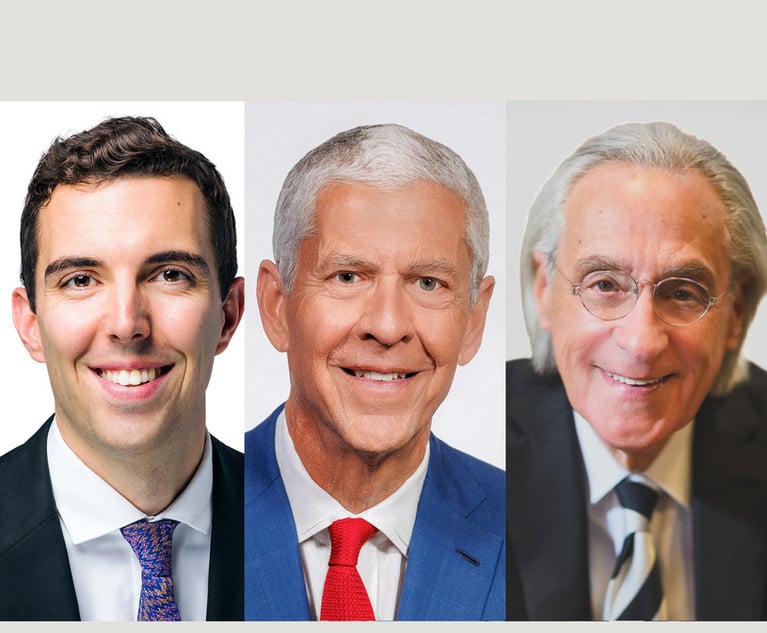 Credit: lucky pics/Adobe Stock
Credit: lucky pics/Adobe Stock Heartbreak and Betrayal: Lawyer Discovers AI Was Responding to Prompts 'Without Regard for the Truth'
Mata is less known for the case facts (a fairly unremarkable personal injury case sprinkled with a little international law on top—the plaintiff alleged his knee was hurt by a metal serving cart on a flight from El Salvador to New York City), and more known as the case involving the attorneys (whose names I will not re-state here as they have already been through enough) who were caught using ChatGPT to write their legal brief.
December 14, 2023 at 10:38 AM
9 minute read
LitigationBy now, most of us have have heard of Mata v. Avianca, 22-cv-1461(PKC), out of the U.S. District Court for the Southern District of New York. Unfortunately for the attorneys involved, Mata is less known for the case facts (a fairly unremarkable personal injury case sprinkled with a little international law on top—the plaintiff alleged his knee was hurt by a metal serving cart on a flight from El Salvador to New York City), and more known as the case involving the attorneys (whose names I will not re-state here as they have already been through enough) who were caught using ChatGPT to write their legal brief.
This content has been archived. It is available through our partners, LexisNexis® and Bloomberg Law.
To view this content, please continue to their sites.
Not a Lexis Subscriber?
Subscribe Now
Not a Bloomberg Law Subscriber?
Subscribe Now
NOT FOR REPRINT
© 2024 ALM Global, LLC, All Rights Reserved. Request academic re-use from www.copyright.com. All other uses, submit a request to [email protected]. For more information visit Asset & Logo Licensing.
You Might Like
View All

Bosworth Claims It Was Kline & Specter, Not Him, That Breached Settlement Terms
4 minute read
Slip-and-Fall Suit Cleared to Proceed Against Kalahari Indoor Waterpark
3 minute read
'What Is Certain Is Uncertainty': Patchwork Title IX Rules Face Expected Changes in Second Trump Administration
5 minute readTrending Stories
- 1Trying a Case for Abu Ghraib Detainees Two Decades After Abuse
- 2The Distribution of Dangerous Products Via Online Marketplaces
- 3The Products Liability Case Against Tianeptine: The Deadly ‘Dietary Supplement’ Found at Your Local Store
- 4The Evolving Landscape of Joint and Several Liability in Pa.: A Post-'Spencer' Analysis
- 5A Deep Dive Into the Product-Line Exception in Pennsylvania
Who Got The Work
Michael G. Bongiorno, Andrew Scott Dulberg and Elizabeth E. Driscoll from Wilmer Cutler Pickering Hale and Dorr have stepped in to represent Symbotic Inc., an A.I.-enabled technology platform that focuses on increasing supply chain efficiency, and other defendants in a pending shareholder derivative lawsuit. The case, filed Oct. 2 in Massachusetts District Court by the Brown Law Firm on behalf of Stephen Austen, accuses certain officers and directors of misleading investors in regard to Symbotic's potential for margin growth by failing to disclose that the company was not equipped to timely deploy its systems or manage expenses through project delays. The case, assigned to U.S. District Judge Nathaniel M. Gorton, is 1:24-cv-12522, Austen v. Cohen et al.
Who Got The Work
Edmund Polubinski and Marie Killmond of Davis Polk & Wardwell have entered appearances for data platform software development company MongoDB and other defendants in a pending shareholder derivative lawsuit. The action, filed Oct. 7 in New York Southern District Court by the Brown Law Firm, accuses the company's directors and/or officers of falsely expressing confidence in the company’s restructuring of its sales incentive plan and downplaying the severity of decreases in its upfront commitments. The case is 1:24-cv-07594, Roy v. Ittycheria et al.
Who Got The Work
Amy O. Bruchs and Kurt F. Ellison of Michael Best & Friedrich have entered appearances for Epic Systems Corp. in a pending employment discrimination lawsuit. The suit was filed Sept. 7 in Wisconsin Western District Court by Levine Eisberner LLC and Siri & Glimstad on behalf of a project manager who claims that he was wrongfully terminated after applying for a religious exemption to the defendant's COVID-19 vaccine mandate. The case, assigned to U.S. Magistrate Judge Anita Marie Boor, is 3:24-cv-00630, Secker, Nathan v. Epic Systems Corporation.
Who Got The Work
David X. Sullivan, Thomas J. Finn and Gregory A. Hall from McCarter & English have entered appearances for Sunrun Installation Services in a pending civil rights lawsuit. The complaint was filed Sept. 4 in Connecticut District Court by attorney Robert M. Berke on behalf of former employee George Edward Steins, who was arrested and charged with employing an unregistered home improvement salesperson. The complaint alleges that had Sunrun informed the Connecticut Department of Consumer Protection that the plaintiff's employment had ended in 2017 and that he no longer held Sunrun's home improvement contractor license, he would not have been hit with charges, which were dismissed in May 2024. The case, assigned to U.S. District Judge Jeffrey A. Meyer, is 3:24-cv-01423, Steins v. Sunrun, Inc. et al.
Who Got The Work
Greenberg Traurig shareholder Joshua L. Raskin has entered an appearance for boohoo.com UK Ltd. in a pending patent infringement lawsuit. The suit, filed Sept. 3 in Texas Eastern District Court by Rozier Hardt McDonough on behalf of Alto Dynamics, asserts five patents related to an online shopping platform. The case, assigned to U.S. District Judge Rodney Gilstrap, is 2:24-cv-00719, Alto Dynamics, LLC v. boohoo.com UK Limited.
Featured Firms
Law Offices of Gary Martin Hays & Associates, P.C.
(470) 294-1674
Law Offices of Mark E. Salomone
(857) 444-6468
Smith & Hassler
(713) 739-1250





